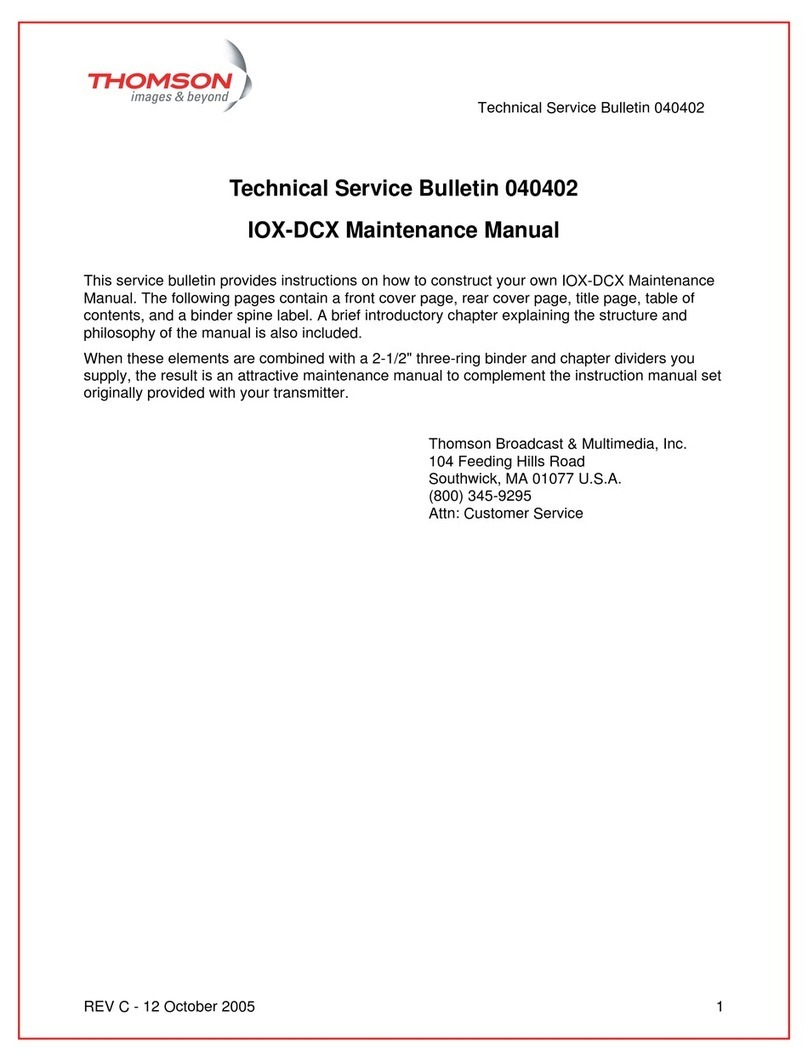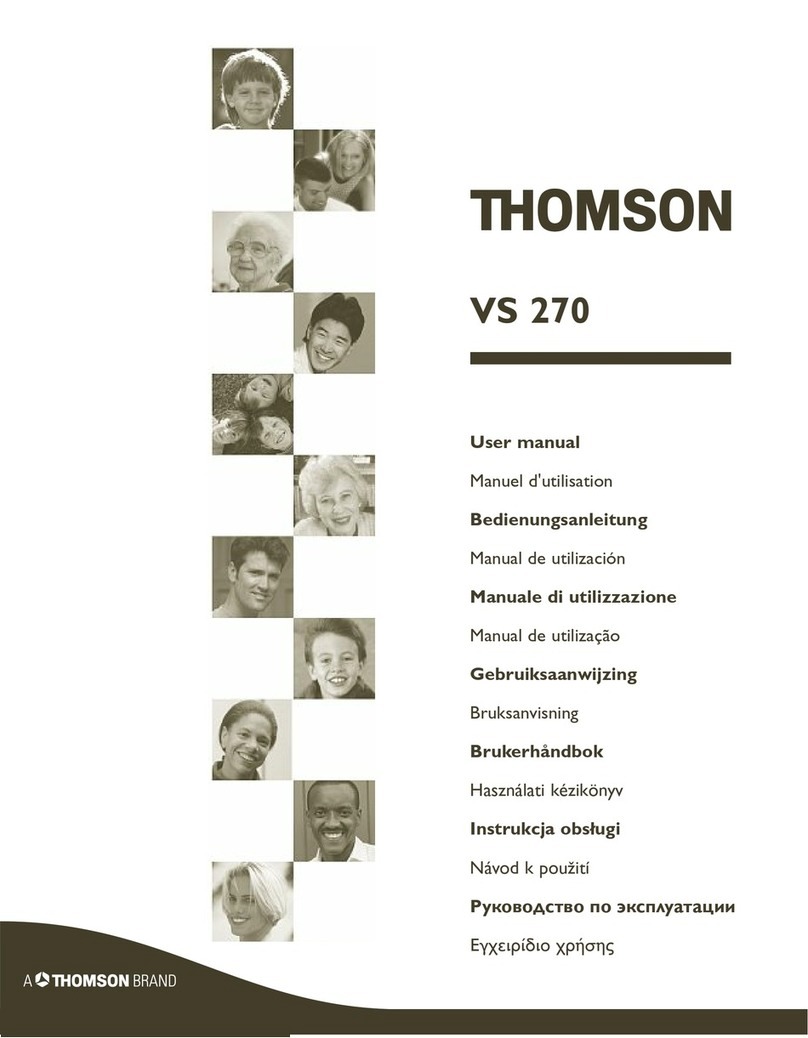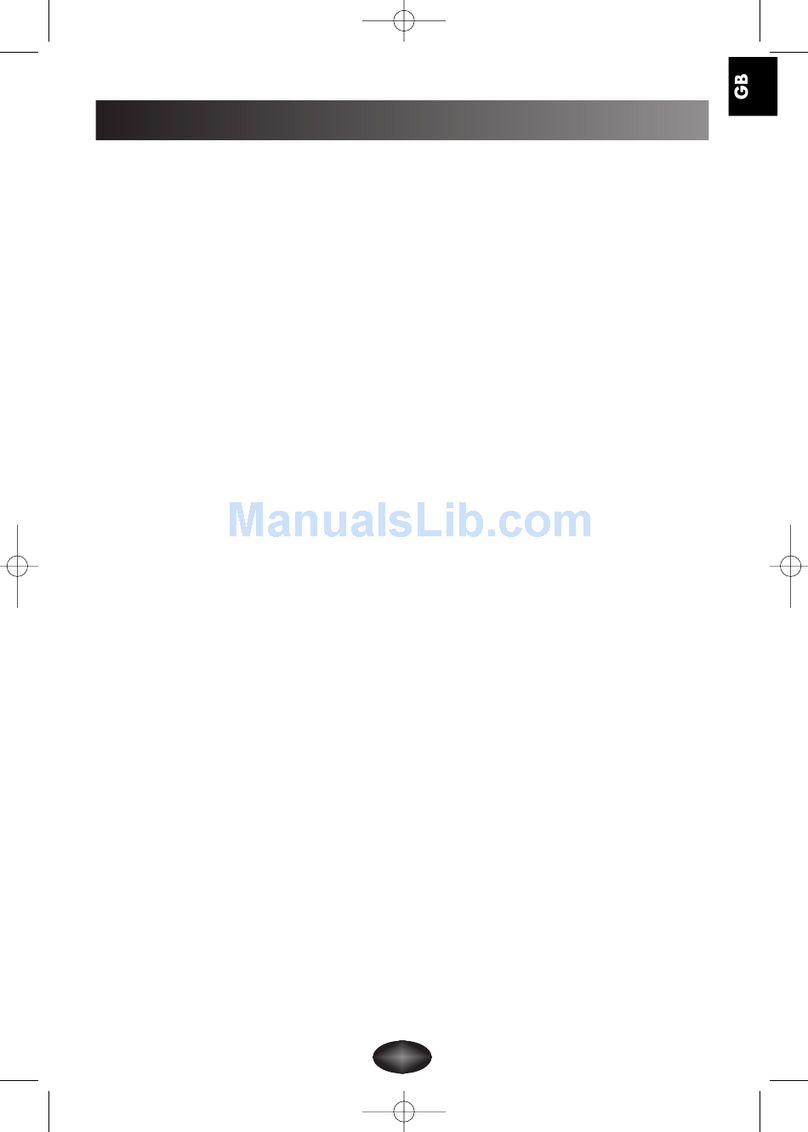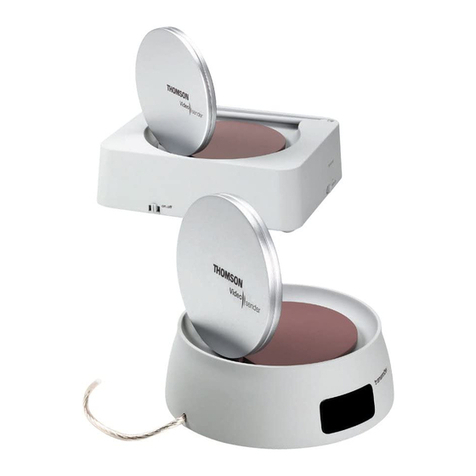4
Installation of transmitter
1. Place the transmitter (1) near the source equipment (VCR player, DVD player, etc.) from
which you want to transmit video or audio output, and connect it with the two cords (2 A
and 2 B) making sure you respect the color coding of the 3 cinch plugs (red and white for
audio, yellow for video). Connect the TV set to a suitable outlet from the VCR player or
DVD player (AV1).
Obtain a (non-supplied) SCART-TV set connector and connect the TV set to the 2B adapter
already connected to theVCR player or DVD player as shown on Page 5 (see item marked *
on Page 5).
2. Fit the mains supply lead (3) to the transmitter and plug it into a 220/240V ~ 50 Hz
mains power supply.
3. Carefully extend the antenna of the transmitter (1) and orient it towards the room where
your second TV set (TV2) is located. Circular antennas must be oriented so that the surfaces
with inscriptions are face to face. Turn on (position ON) the transmitter and receiver, using
the ON/OFF switch located on its lower side. Place the channel selectors of the transmitter
and the receiver on the same channel (same letter).
4. Fit the lead (4) following these stages:
- connect the jack plug to the IR EXTEND socket,
- unwind the lead and place one cell near the infrared window of the unit to be operated
(video recorder or other),
- after installing the receiver (see Pages 6 and 7), ask someone to use the remote control of
that equipment item to be controlled from the room where the second (TV2) is located,
- by moving the cell around in front of the unit to be operated you will find the location that
permits its control from the other room.You must fix the cell in that position. Usually, this
will be a more or less large, transparent area located on the front of the unit.
5. Remove the protective self-adhesive film from the infrared cell of cord (4) and affix it to the
infrared-sensitive panel of the equipment to be remote controlled.The cordon has 3 cells in
order to let you play video and audio from 3 equipment items connected to the (TV1) set
(see Diagram 2on Page 10).


































